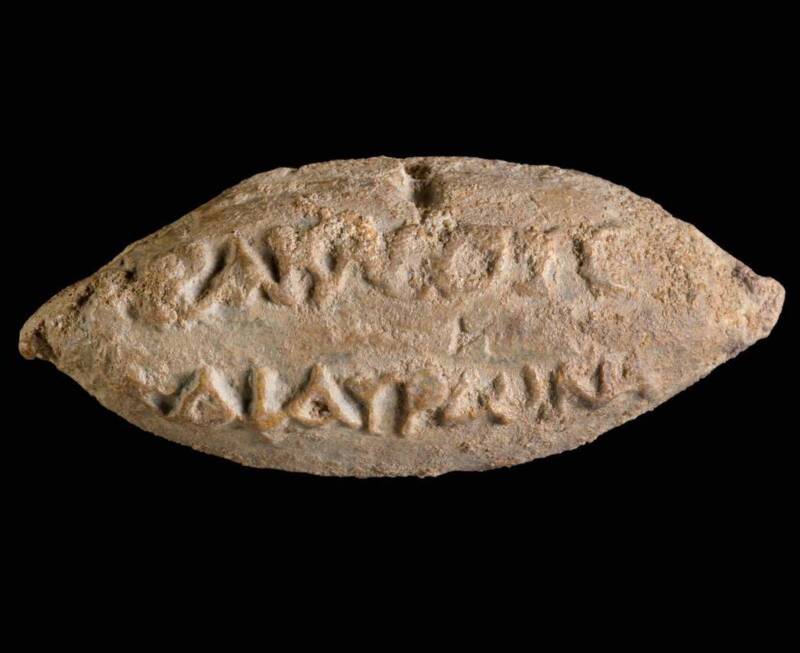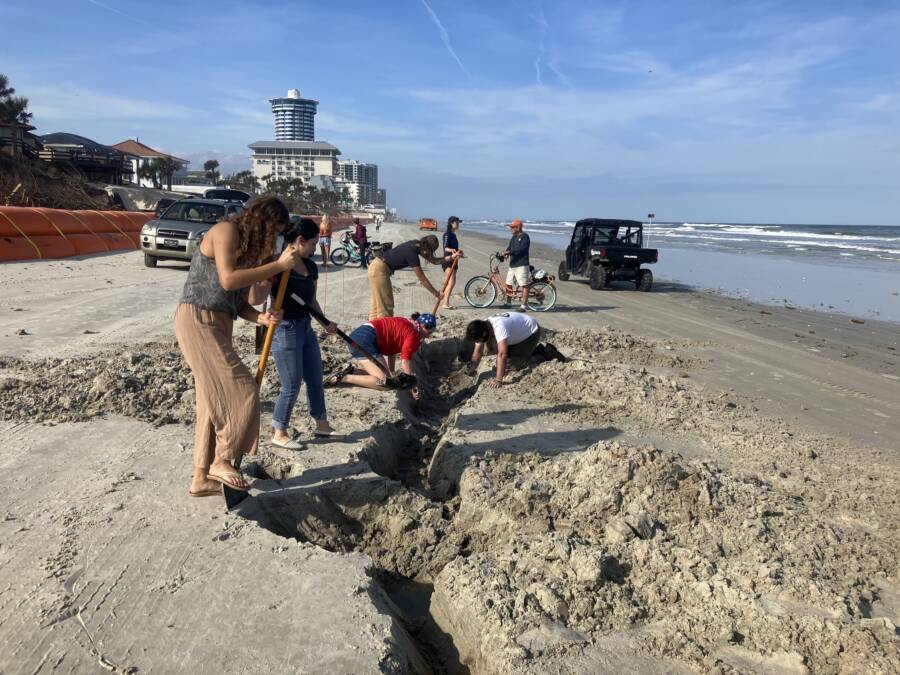Ancient Greek projectile unearthed in Israel, 19th-century shipwreck appears on a Florida beach, Roman coin found to depict a lost emperor.
A 2,200-Year-Old Greek Bullet Inscribed With The Name Of Hercules Was Just Unearthed In Israel

Israel Antiquities AuthorityIn addition to bearing the name of Hercules, the bullet also references Hauronas, an ancient Egyptian god whose name was invoked in order to cause great harm to one’s enemies.
In the second century B.C.E., the Greek Seleucids and the Judean Hasmoneans were at war for control in present-day Israel. A decades-long conflict with several phases, this was the war that saw the Maccabees eventually gain independence from Hellenistic rule and gave birth to the origin story of Hanukkah.
Now, archaeologists in Yavne, Israel have uncovered an ancient slingshot projectile from this historic era. Though just 1.7 inches long, this lead “bullet” is inscribed with both “victory” and “Hercules.” The bullet also references Hauronas, an ancient Egyptian god whose name was invoked in order to cause great harm to one’s enemies.
Discover the full story behind this astounding find here.
Mysterious Structure Seen Poking Out Of Florida Beach Determined To Be A Shipwreck From the 1800s

St. Augustine Lighthouse & Museum/FacebookArchaeologists work to examine the shipwreck, which appeared in Florida around Thanksgiving 2022.
After two hurricanes battered a beach at Daytona Beach Shores in Florida, local residents started to notice a wooden structure poking out from the sand. It appeared to be between 80 and 100 feet long and around 25 feet wide and had been apparently revealed due to erosion from Hurricane Ian and Hurricane Nicole. Now, archaeologists have announced that they believe that the structure is a lost 19th-century shipwreck.
Dig deeper in this report.
A Hoard Of Ancient Roman Coins Was Just Authenticated — And Potentially Proves The Existence Of A Lost Emperor

University of GlasgowNew research suggests that Sponsian, depicted here, might have been a real Roman emperor.
Three centuries ago, a hoard of Roman coins was discovered in Transylvania. They were eventually dismissed as fakes — forgeries were frequent at the time, and the coins bore the likeness of an obscure figure named Sponsian. But new research suggests that the coins may be authentic. And what’s more, that would also prove that the much-debated “emperor” Sponsian really existed.
Read on here.





